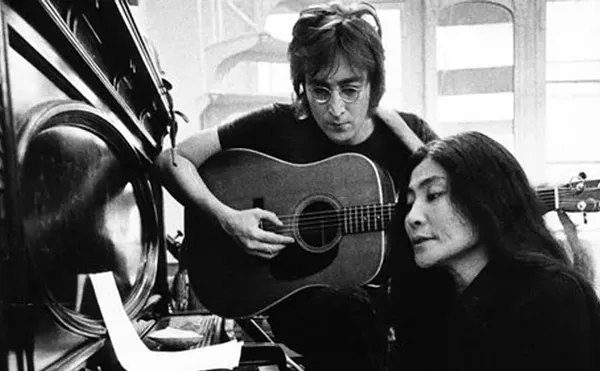
Audio By Carbonatix
[
{
"name": "GPT - Leaderboard - Inline - Content",
"component": "35519556",
"insertPoint": "5th",
"startingPoint": "3",
"requiredCountToDisplay": "3",
"maxInsertions": 100,
"adList": [
{
"adPreset": "LeaderboardInline"
}
]
}
]
When Kevin Elliott Thompson practices acupuncture, he begins by looking at his client’s tongue.
"If the tongue is moist or dry, if it’s bright or dull, pink or red, it tells me about dampness and heat, deficiency and excess," he explains. "I want to know where the disharmony is coming from."
The tongue gives information about the liver, heart, spleen and gall bladder, Thompson says.
Then Thompson feels the pulse in three positions, which he says reveals the condition of the kidneys, lungs, liver and spleen. This leads him to a spot on the leg. He presses the area with his thumb. Then he might ask, "How is your sleep?"
All of these questions help him determine what disharmonies exist in his client. Acupuncture, Thompson believes, restores harmony to the body. "Everyone has some disharmony," he explains. "That’s what disease is. Dis. Ease."
He opens a package of slender needles, each encased in a plastic sleeve. He removes the cap from one end of the sleeve and positions the needle between his thumb and second finger. He removes the other cap and taps on the head of the needle, then slips off the sleeve. "Tell me when you feel it," he says as he turns the needle.
Marilyn Morehead, the client, has an exercise-related injury to her hip. She says that after her last acupuncture treatment she was free of pain for the first time since the injury.
"It feels like a current that pulsates," Morehead says as Thompson places needles beneath her skin. "It’s so intense. It’s like you’re tingling, like there’s electricity running through you."
"Marilyn has a lot of je," Thompson comments. Je (pronounced chee, and also spelled chi) is energy, or life force.
Morehead, who has a doctorate in exercise physiology and took courses at Wayne State University’s medical school, says, "The other people in the class were studying to become doctors. I can imagine what they would think of this. But I don’t believe Western medicine understands all the energy systems in the body."
"Less is more," Thompson says as he taps another needle into place. "Some acupuncturists are so unsure of what they’re doing that they put needles everywhere, like a human pincushion. They get the je running all over, and it can’t be directed towards the one thing that’s wrong."
Thompson, who is not trained in Western medicine, is studying acupuncture at the Acupressure-Acupuncture Institute in Miami, Fla., as part of a four-year program in traditional Chinese medicine.
Chris Stoyanovich, a physician and anesthesiologist at Bi-County Community Hospital in Warren, is also studying acupuncture. Two years ago he began a self-study program in Santa Monica, Calif. That program’s director, Dr. Joseph Helms, uses the term "medical acupuncture" to encompass the amalgam of Western and Eastern medicine. Only physicians are accepted in the program, which begins with four days of study on-site and continues at home with 40 videotaped lectures and some 4,000 pages of text. Students then return for two weeks of clinical practice.
Stoyanovich says it was a leap to go from Western to Eastern medicine. "For someone trained in Western medicine, you’re sitting there listening to a lecture about the balance between heaven and earth, yin and yang. You’re reading this stuff about invasions of wind, kidney fire, heart fire. You have to suspend a certain disbelief."
Because he is an anesthesiologist, Stoyanovich limits his acupuncture practice to treatment of pain. "If someone comes in with a viral illness – the Chinese call that a problem with wind – I can do that, but I don’t."
Stoyanovich feels that the combination of Western and Eastern medicine works best. "A patient might come in and say, ‘I have back pain.’ It could be a disc problem, it could be vascular. It could be a metastasis to the spine. Without medical training, a huge problem might be missed completely."
But acupuncture is clearly useful for many medical purposes. In 1997 Thompson traveled to China, where he observed surgeries performed with no anesthesia other than acupuncture. The Chinese might see the acupuncturist or herbalist weekly. "A Chinese mother might say to a child, ‘Oh, you have dampness,’ and they would go to the acupuncturist."
Most Americans, Thompson believes, think of acupuncture as a fix-it for something that hurts, if they think it has any validity at all.
There are explanations for why acupuncture works. Chinese medicine sees the body as connected by pathways, or meridians. Internal meridians connect organs. Blockages in the meridians are cleared with needles to restore the flow of je. Western medicine understands meridians as neurological pathways, which are stimulated by needling.
Both Thompson and Stoyanovich sound zealous when they talk about acupuncture. "When I started acupuncture school," says Thompson, "I had the worst arthritis in my knees. One treatment and it was gone." His own mother remained skeptical until he treated a 73-year-old cousin whose arthritis was so severe that she could not climb stairs. The cousin remains pain-free after one treatment two years ago.
Stoyanovich’s first case is his best success story. He treated a nurse at Bi-County for back pain. "They didn’t want to operate," Stoyanovich recalls, "although you could see on the X-ray that she had a bulging disc."
"She had 12 treatments, once a week. Now she can work in her garden. She’s thrilled beyond belief."





